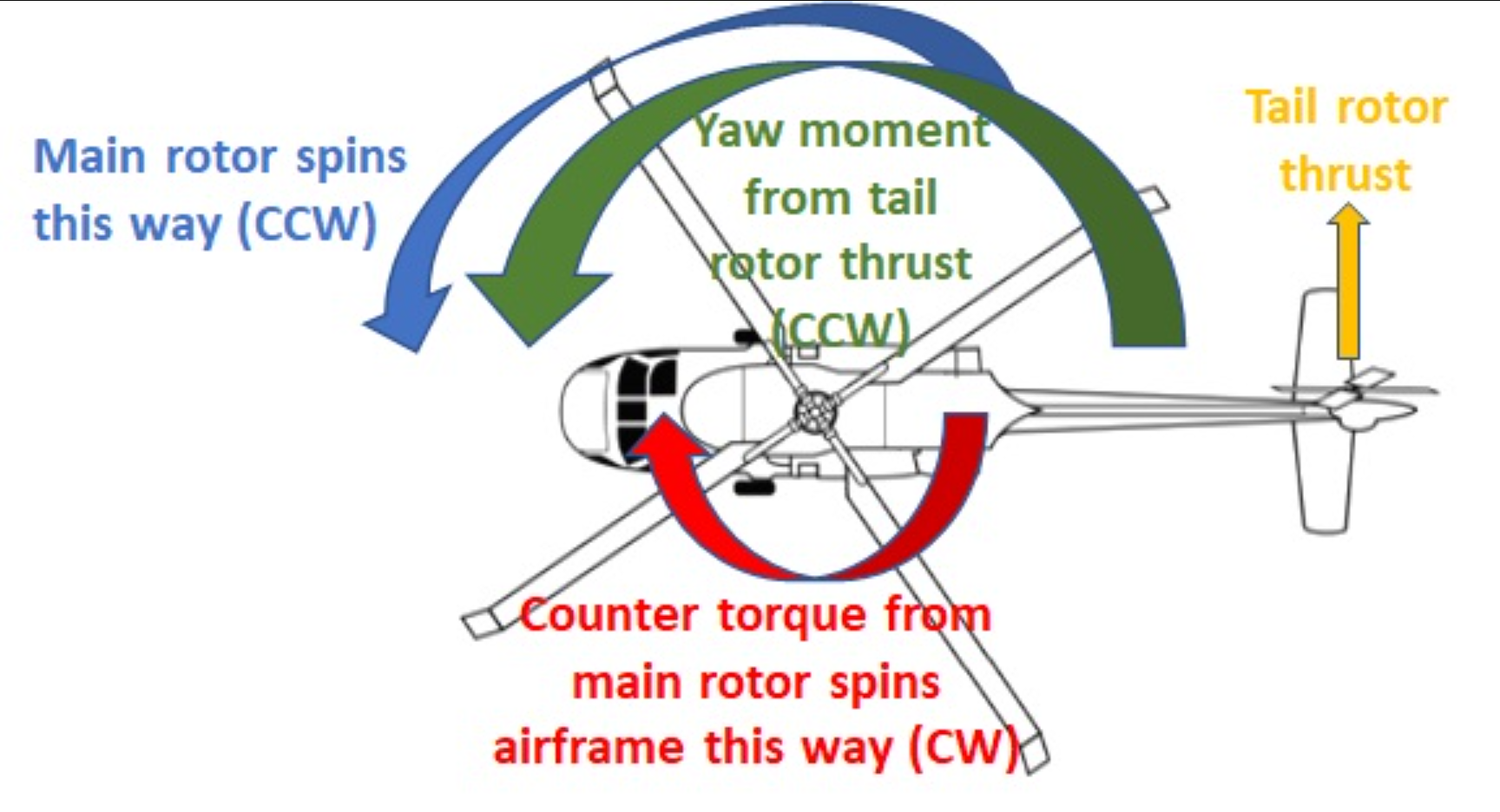Torque Effect (Helicopters)

Torque effect in helicopters is a direct result of Newton's Third Law: for every action, there's an equal and opposite reaction. When the main rotor spins to create lift, it also creates a twisting force (torque) that causes the helicopter's fuselage to rotate in the opposite direction. This is countered by the tail rotor, which provides an opposite thrust to maintain stability and control.
Elaboration
Torque and Counter-Torque: The spinning main rotor creates a torque that, if left uncompensated, would make the helicopter spin in the opposite direction of the rotor's rotation. To counteract this, most helicopters use a smaller tail rotor, which provides an opposing thrust to maintain directional control.
Early Designs: The design of a tail rotor to counter torque was a key development in early helicopter design, as it allowed for more stable and controllable flight.
Alternatives to Tail Rotors: While the tail rotor is the most common design, other methods exist to counter torque, including ducted fans (like Fenestron or FANTAIL), NOTAR systems, and counter-rotating main rotors.
NOTAR (No Tail Rotor): NOTAR systems use a Coandă effect to create a controlled airflow around the tail boom, providing anti-torque without the need for a traditional tail rotor.
Counter-Rotating Rotors: Some helicopter designs use two main rotors that spin in opposite directions, eliminating the need for a separate tail rotor.
Importance of Torque Control: Proper torque control is crucial for stability and control in all phases of helicopter flight, including takeoff, hovering, and forward flight.
Translating Tendency: The tail rotor also contributes to a phenomenon called translating tendency, where the helicopter drifts laterally due to the tail rotor's thrust. Pilots compensate for this by tilting the main rotor disk to the left.
